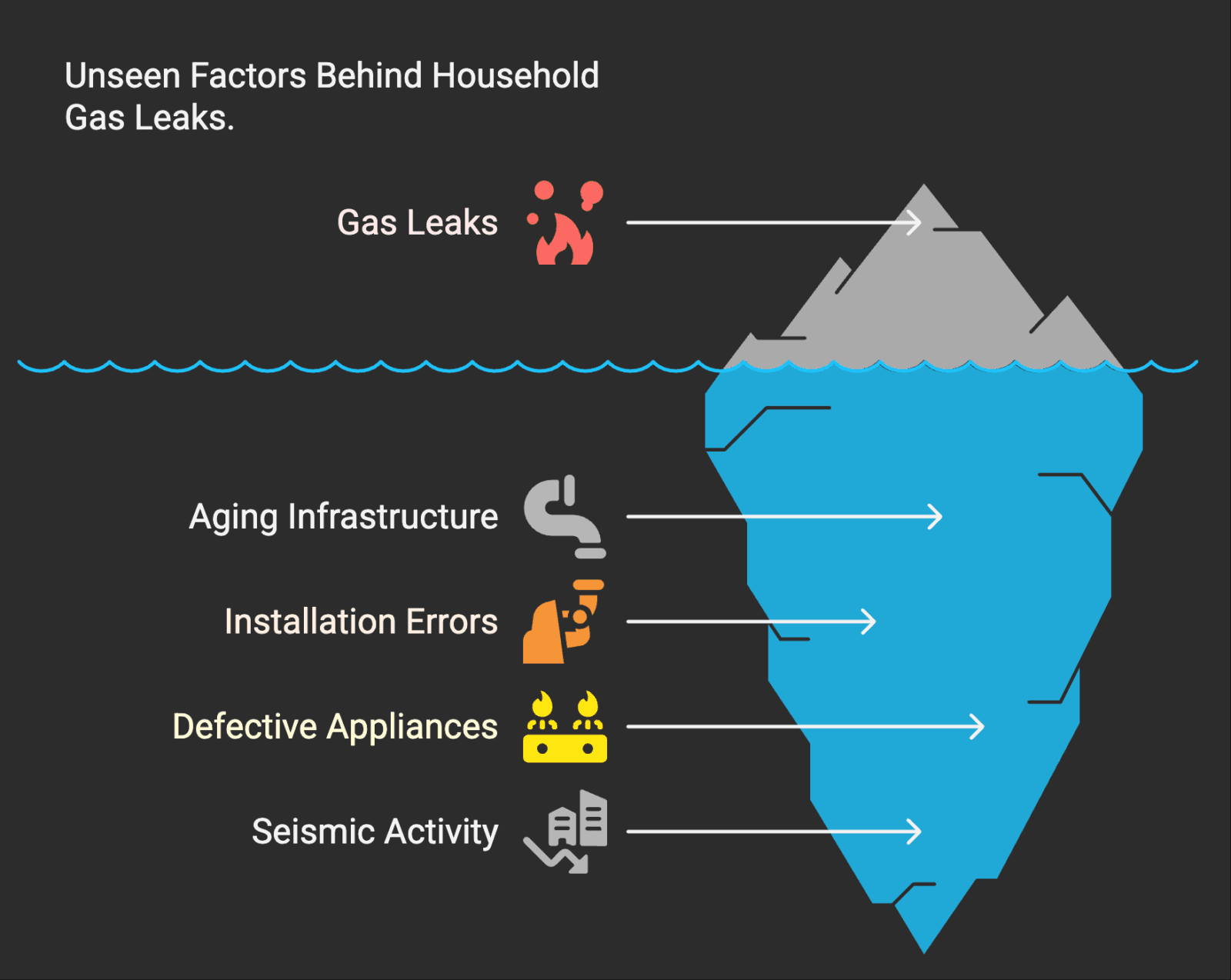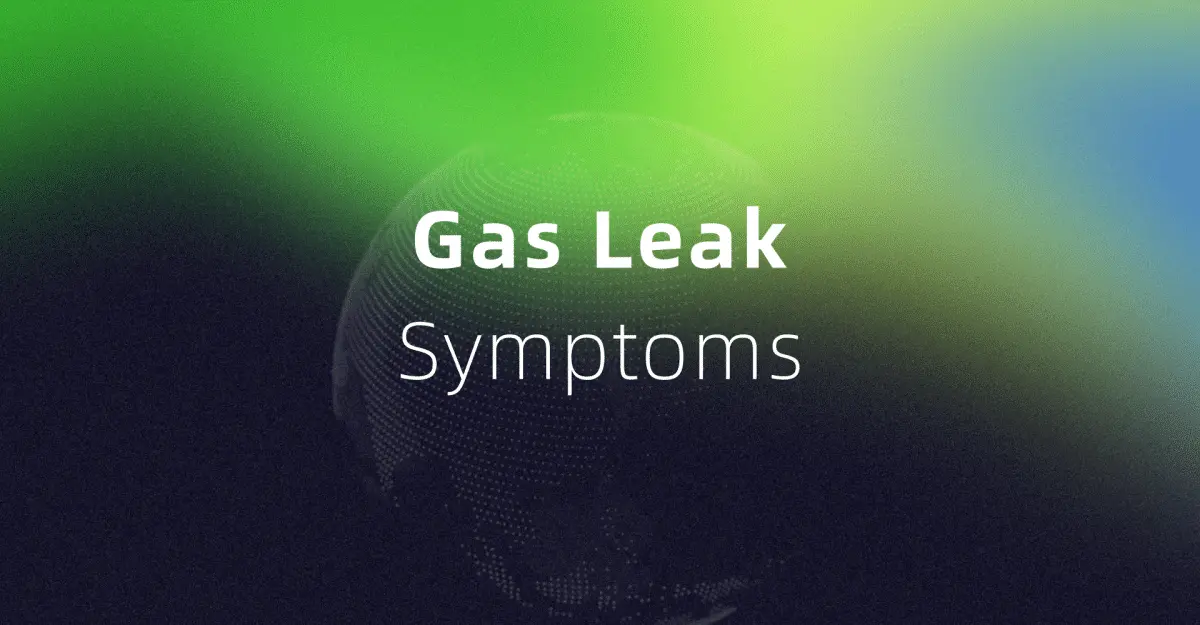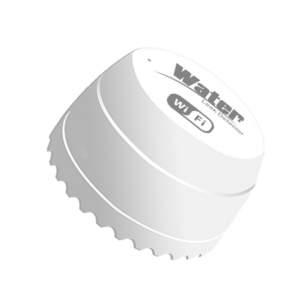Introduction: Why Gas Safety Starts With Awareness
When it comes to household dangers, a gas leak is one of the most silent and serious threats you can face. It often begins with subtle signs: a faint odor, a hissing sound, or even unexplained headaches. Unfortunately, many homeowners don’t realize the severity until it’s too late.
In this article, we’ll help you understand:
- The most common gas leak symptoms
- How to recognize natural gas leak symptoms early
- What to do if your house smells like gas
- And how to respond to slow gas leaks before they escalate
💡 Home safety tip: Knowing what a natural gas leak smells like and how to act quickly can save lives and property.
1. What Causes Gas Leaks in Homes?
Before diving into the symptoms, let’s look at what causes household gas leaks:

- Aging gas lines or pipe fittings
- Improper installation of appliances
- Faulty gas stoves, heaters, or fireplaces
- Damaged gas regulators or valves
- Earthquakes or foundation shifting impacting pipelines
While natural gas is odorless, utility companies add a chemical called mercaptan to give it a distinctive smell—often described as rotten eggs—to alert residents of potential leaks.
2. Common Gas Leak Symptoms in the Home
Whether it’s a slow gas leak or a more serious event, the body and environment will often show early warning signs.
A. Physical Symptoms in People and Pets
These are among the first indicators something is wrong:
| Symptom | Why It Happens |
|---|---|
| Headaches | Oxygen displacement caused by gas |
| Nausea or dizziness | Inhalation of low levels of natural gas |
| Fatigue or drowsiness | Gas affects oxygen levels and alertness |
| Irritation in eyes/throat | Possible buildup of contaminants |
| Shortness of breath | Especially for those with respiratory issues |
| Pets acting unusually lethargic | Animals are often more sensitive to gas leaks |
🛑 If multiple family members or pets experience these symptoms simultaneously indoors, it may indicate a gas leak.
B. Environmental or Appliance Symptoms
Visual and audio clues can be just as telling:
- House smells like gas — particularly near your stove, furnace, or gas meter
- Hissing or whistling sounds near pipes or gas lines
- Dead houseplants without any obvious reason
- Dust blowing near gas lines, even when no wind is present
- Pilot lights going out frequently
- Burners with orange/yellow flame instead of blue
These natural gas leak symptoms should never be ignored. Even if the smell is faint or intermittent, it may signal a slow gas leak that worsens over time.
3. What Does a Natural Gas Leak Smell Like?
The most identifiable sign of a gas leak is the distinct odor created by mercaptan, an additive that smells like:
- Rotten eggs
- Sulfur
- Sewage
- Moldy cabbage
While some people may become “nose blind” to the smell over time, it’s crucial to pay attention to any sudden, unusual odors, especially near appliances or gas lines.
🧠 Pro tip: If you’re unsure, step outside and breathe fresh air. When you reenter, you’ll better detect any gas odor in the space.
🛑 Stay Calm, Stay Safe
If you're reading this and already think your house smells like gas, don't wait. Immediately:
- Do NOT ignite flames or use electronics
- Ventilate the area by opening doors and windows
- Evacuate your home
- Call your utility company or emergency services from outside
Up next in Part 2/3:
- How to detect slow gas leaks with tools and sensors
- Smart gas leak detectors you can install at home
- How products like Grus GasNet-CM can alert you in real time
📌 Stay tuned and stay safe—your life may depend on it.
4. Detecting Slow Gas Leaks and Protecting Your Home
Not all gas leaks come with a dramatic smell or an audible hiss. In fact, the most dangerous leaks are often slow, silent, and build up over time—without any obvious warning signs.
Let’s explore how you can detect slow gas leaks, the role of smart sensors, and why every modern home should have a gas detection system in place.
4.1 What Are Slow Gas Leak Symptoms?
A slow gas leak refers to a small, continuous leak that may not trigger immediate physical symptoms or strong odors. However, over time it can accumulate to dangerous levels.
🐢 Typical Signs of a Slow Leak:
- Intermittent headaches or nausea at home but not outside
- Slight rotten egg smell that seems to "come and go"
- Inconsistent gas burner performance
- Unexplained increase in your gas bill
- Gas-powered appliances feel warmer than expected when off
These can be easy to dismiss—but ignoring them may allow gas to accumulate, raising the risk of asphyxiation or explosion.
4.2 Tools to Detect Gas Leaks at Home
Besides your nose, there are several tools and devices that can help confirm or rule out a gas leak:
| Tool/Device | Function |
|---|---|
| Soap and water test | Bubbles form over leaky fittings or pipe joints |
| Handheld gas leak detectors | Sniffers that detect methane or propane gases |
| Smart gas leak sensors | Real-time alerts via WiFi or mobile app |
| Utility smart meters | Unusual consumption can hint at a hidden leak |
🧪 DIY test: Mix water with dish soap and apply to suspected gas connections. If bubbles form, you may have a leak. Do not light anything during this test.
5. Why Every Home Should Have a Smart Gas Detector
Relying solely on smell or symptoms is risky—especially for households with:
- Elderly individuals
- Children
- Pets
- Sleep apnea patients on oxygen machines
- Multiple gas appliances
Enter: The Grus GasNet-CM Smart Gas and CO Detector
This all-in-one device is designed to monitor natural gas leaks, carbon monoxide, and air quality. It provides:
- 24/7 real-time detection of methane, propane, and CO
- Loud local alarms + mobile app notifications
- WiFi connectivity (no hub needed)
- SmartThings and Alexa integration
- Compact and discreet design—ideal for kitchen, basement, or garage
--- title: "How Grus GasNet-CM Works" --- flowchart TD; A[GasNet-CM Sensor] --> B[Detects Gas or CO Levels] B --> C[Triggers Buzzer + LED Warning] B --> D[Sends Alert to Grus App] D --> E[Push Notification to User Phone] E --> F[User Takes Action or Calls Utility]
📍 Placement tip: Install GasNet-CM near gas-burning appliances, especially kitchens, laundry rooms, and basements.
6. Integrate Smart Gas Monitoring into Your Home Safety System
For homeowners with smart homes or energy systems already in place, smart gas detection is a natural (and necessary) extension.
With Grus smart energy monitors and thermostats already optimizing HVAC and electricity, adding a GasNet series sensor helps:
- Monitor unseen risks (gas, CO)
- Receive alerts while away from home
- Create automated routines (e.g., turn off HVAC when leak is detected)
- Add another layer of safety alongside smoke and water sensors
✅ For multi-story homes or homes with aging gas infrastructure, installing multiple sensors ensures full coverage.
7. What to Do If You Suspect a Gas Leak + Final Safety Checklist
Gas leaks can be terrifying—but with the right response plan and proactive monitoring, you can protect your home and loved ones.
In this final section, we’ll cover:
- Immediate actions when a leak is suspected
- When to call 911 vs your utility company
- Preventive safety tips
- How to build a complete smart safety system with Grus
7.1 Emergency Response Checklist: What to Do Right Now
If you suspect or confirm any signs of a gas leak—don’t panic, but act quickly.
🛑 Do This Immediately:
- Leave the building immediately. Do not try to locate the leak yourself.
- Do not use electronics, matches, or lighters. Even flipping a light switch can cause a spark.
- Open windows and doors as you exit to help ventilate.
- Call your gas utility or 911 from a safe location.
- Keep others away from the property until cleared by professionals.
🧯 DO NOT re-enter your home until the gas company or fire department confirms it's safe.
7.2 Who to Call in a Gas Leak Emergency
| Situation | Contact |
|---|---|
| You smell gas indoors | Local gas utility emergency line |
| You see sparks, fire, or feel unwell | 911 (Emergency services) |
| CO detector is triggered | Fire department + evacuate |
| Mild odor, unsure of source | Utility or certified plumber |
Have these contacts saved in your phone and posted near your main gas meter for easy access.
7.3 Preventive Tips to Avoid Future Leaks
Even if you’ve never had a leak before, proactive steps can save lives:
- Schedule annual inspections of all gas appliances
- Upgrade to smart detectors with 24/7 monitoring
- Teach everyone in your household what gas smells like and how to respond
- Label your gas shut-off valve and teach family members how to use it
- Consider bundling gas detection with smoke, CO, and water leak sensors
🏡 Stay Protected with the Grus GasNet Series
The Grus GasNet safety ecosystem was designed to help homeowners like you detect, respond to, and prevent gas-related emergencies.
🛒 Grus Smart Safety Products:
| Product | Key Features |
|---|---|
| GasNet-CM | Detects natural gas + CO, WiFi alert, audible alarm |
| AquaNet-M | Compact version for smaller spaces or travel use |
| AquaNet-BD | Smart water shutoff for leak-related risks |
| Grus App Integration | Central monitoring of all home safety devices |
Protect your home from both gas and carbon monoxide leaks with our dual smart detector set. Enjoy up to 10% off for a limited time — peace of mind has never been this affordable.
Shop the Black Friday Bundle →



